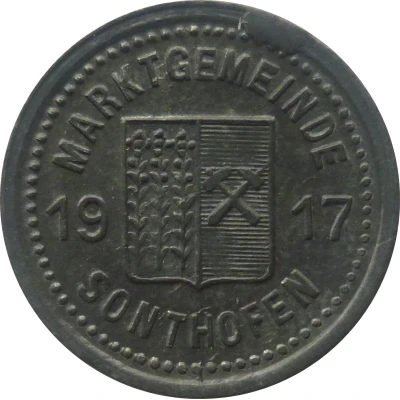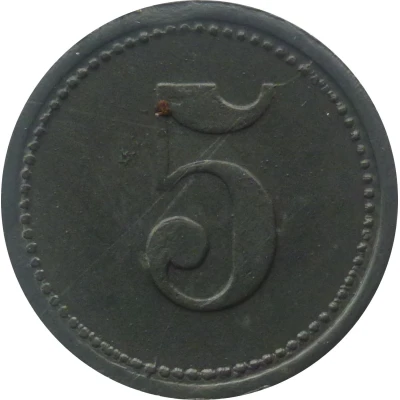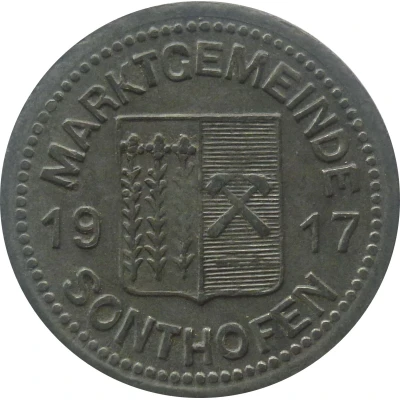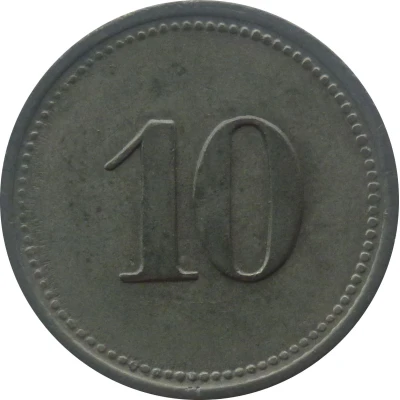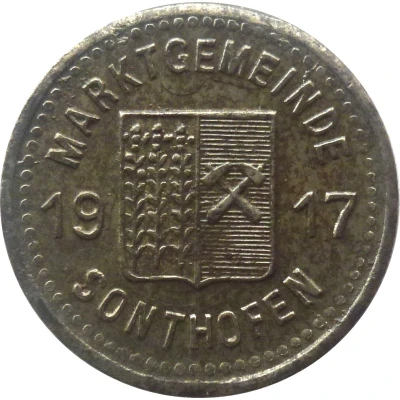
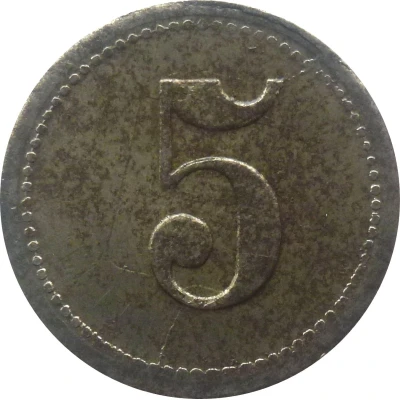

© Willem63 (CC BY-NC-SA)
5 Pfennigs - Sonthofen
1917 year| Iron | 1.8 g | 17.2 mm |
| Issuer | Market Town of Sonthofen (Federal state of Bavaria) |
|---|---|
| Emperor | William II (Wilhelm II) (1888-1918) |
| Type | Standard circulation coin |
| Year | 1917 |
| Value | 5 Pfennigs (5 Pfennige) (0.05) |
| Currency | Mark (1914-1924) |
| Composition | Iron |
| Weight | 1.8 g |
| Diameter | 17.2 mm |
| Thickness | 1.1 mm |
| Shape | Round |
| Technique | Milled |
| Orientation | Medal alignment ↑↑ |
| Demonetized | Yes |
| Updated | 2024-10-04 |
| Numista | N#353815 |
|---|---|
| Rarity index | 93% |
Reverse
Pearl rim, denomination centered
Script: Latin
Lettering: 5
Edge
Plain
Interesting fact
The 5 Pfennigs - Sonthofen 1917 coin is interesting because it was produced during a time of economic turmoil in Germany, known as the "Inflationary Period" (1914-1923), when the value of the German mark dropped significantly due to the country's involvement in World War I and the subsequent economic crisis. As a result, many German cities, including Sonthofen, began issuing their own local currency, like this 5 Pfennigs coin, to address the shortage of small change and stabilize the local economy. This coin's iron composition was also a result of the wartime economy, as other metals like copper and nickel were scarce or too expensive to use for coinage.
